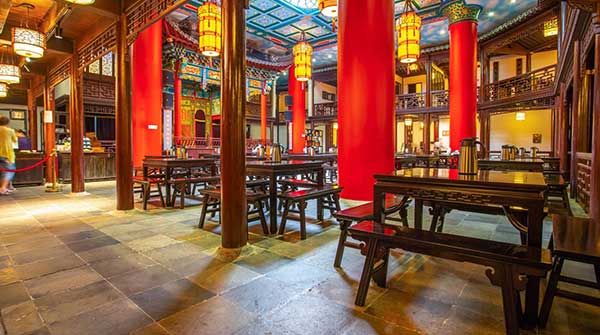
Credit: 4045 Via Freepik
Imagine you’re driving the Trans-Canada highway from the eastern reaches of the Maritimes, through the Golden Horseshoe and prairies, over the Rocky Mountains and into the Pacific Northwest’s temperate rainforests. What do you think would be the most common sight on your long journey?
It’s a toss-up. But you could make a strong case for it being a Chinese restaurant. Different trees, land formations and provincial flags will come and go, but the constant throughout your cross-Canada journey will be the indelible influence of Chinese cuisine. Every small town, mid-sized city and urban neighbourhood has a Chinese restaurant.
Aside from their ubiquity, Chinese restaurants in Canada tell a story of adaptation, innovation, resilience and influence. In this article, let’s attempt (in a few hundred words) to chart the astronomical impact of Chinese cuisine on Canada.
The Early Entrepreneurs: A Story of Adaptation and Ingenuity
As Canadian food delivery service SkipTheDishes notes in their intensively researched online culinary encyclopedia, “Chinese immigrants first came to Canada in the 18th century, and they have been bringing their food culture with them ever since.”
While the history of Chinese immigration stretches back to around 1788, the story of Chinese cuisine’s impact starts in earnest around the mid-1800s. Railway workers, primarily from the Guangdong region, settled across the country, bringing with them their rich history of food.
Chinese entrepreneurs at this time had to be highly adaptive. For instance, fledgling restaurateurs in Vancouver created “smorgasbords” that appealed to the Scandinavian labourers there – and these hot tables would morph into what we now recognize as the Chinese buffet.
Against the Odds: Restaurants Born of Necessity in the Early 20th Century
The story of Chinese cuisine in Canada hasn’t always been as palatable as the food itself. In the late 19th Century, the Canadian government levied a “head tax” as part of its xenophobic Chinese Immigration Act. Among other disenfranchisements, the act restricted many Chinese immigrants to opening either laundries or restaurants.
But the story of Chinese food in this country is a tale of resilience. Many Chinese immigrants with little to no restaurant experience opened restaurants, highlighting their native home cooking techniques. At the same time, restaurateurs continued to adapt their regional food for a Canadian audience.
Mid-Century Modern: Chinese Foodways and the Gateway to Innovation
The mid-20th Century was a boom time for Chinese food in Canada. The Immigration Act crumbled, new waves of immigration landed in Canadian cities, and Chinese chefs felt that restaurant ownership was no longer a necessity – it was an opportunity.
It’s around this time we start seeing intense innovation. Beloved Chinese-Canadian dishes like ginger beef, Thunder Bay-style bonbon spare ribs, Montreal peanut butter dumplings and Newfoundland Chow Mein make their grand debuts on Canadian menus. Dining at Chinese restaurants becomes trendy for Canadians around this time, and you can track the fervour around Chinese food by the number of cookbooks, TV shows and magazine articles in the 60s and onwards.
A Diverse Diasporic Expression: Chinese Food in the 21st Century
Fast-forward to today. Chinese immigration accounts for the largest share of immigration in this country. But whereas past immigration waves came primarily from the Cantonese south, modern waves span the entire area – from the PRC, Taiwan and Hong Kong.
These diverse origins have given rise to a diverse diasporic expression. You can still find sweet and sour pork on most menus. But you can also find Hainanese Chicken Rice, Shandong-style wok-fried clams, Sichuanese hot pot, Uyghur-style barbecue, and countless other regional favourites.
It’s tempting to think of Chinese food as a homogenous thing – singular, fixed and easy-to-grasp. But Chinese cuisine in Canada is anything but homogenous. It’s a constantly shifting history of various regional influences, family recipes, historical pressures, hopes and dreams. And Canada wouldn’t be Canada without it.
This content is a joint venture between our publication and our partner. We do not endorse any product or service in the article.

